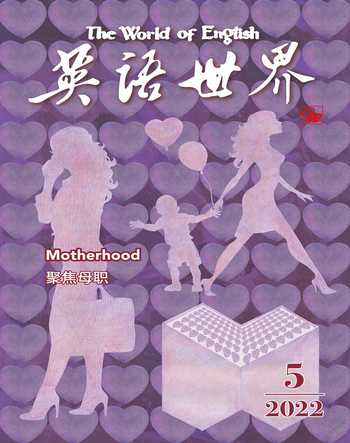《中国科学技术史·语言与逻辑》选译(五)
何莫邪 陈国华 卢培培
【译者言】何莫邪的这部书,主要讲古代中国的语言与逻辑,这两方面都与哲学有着分不开的关联。古代中文里没有哲学和哲学家这两个词,不过《诗经》和《尚书》里有哲人、哲士、哲王、哲夫、哲妇等,后来又出现了哲思、哲理等,其中哲字的意思都是“明智”(《漢語大字典》哲条下)。直到清末有人将哲学这个术语从日文引入中文,这才有了哲学和哲学家这两个词。而日文哲学这个词,据说是日本明治维新时期教育家和启蒙家西周(1829—1897)根据哲和学这两个字各自的意思,将之合为一体,作为英语philosophy的对应词使用而流行起来的。
问题是,古代中文里没有哲学和哲学家这两个词,是否就意味着古代中国人没有哲学这一概念,古代中国也没有哲学家?与之类似的问题可以举出一大堆,例如古代中文里没有真理、逻辑等词,能否由此推断古代中国人没有真理、逻辑等概念,或古代中国没有逻辑学家?
何莫邪的看法是,那倒不一定。例如,他在本期的节选里断言:“中文里明显有真理概念,只不过真理确实未被视为哲学的一个十分重要的核心问题,而哲学在中国一直主要是以实用为宗旨。”什么叫“以实用为宗旨”?《荀子·正名篇》里的下面这段话说得最清楚。请特别注意最后下加横线的部分。为了帮助大家从西方哲学家的视角解读这段话,我们为大家配上英国伦敦大学亚非学院已故著名汉学家葛瑞汉(A.C. Graham,1919—1991)的译文。
异形离心交喻,异物名实玄纽,贵贱不明,同异不别;如是,则志必有不喻之患,而事必有困废之祸。故知者为之分别制名以指实,上以明贵贱,下以辨同异。贵贱明,同异别,如是则志无不喻之患,事无困废之祸。此所为有名也。
When with differences in expression and divergence in thought we communicate with each other, and different things are obscurely confounded in name or as objects, the noble and the base will not be clarified, the same and different will not be distinguished; in such cases intent will inevitably suffer from frustration and obstruction, and action will suffer from frustration and obstruction. Therefore the wise made for them apportionments and distinctions and instituted names to point out objects, in the first place in order to clarify noble and base, secondly to distinguish same and different. When noble and base are clarified, and same and different distinguished, intent is not hampered by failure to communicate and action does not suffer from frustration and obstruction. This is the purpose of having names.[Graham. 1989. Disputers of the Tao: Philosophical Argument in Ancient China. 此書的中译本是《论道者:中囯古代哲学论辩》(葛瑞汉著,张海晏译,2003)]
中国人看见古代中文文献里提到“名”和“实”,读到古人有关“名实”的论断,通常不会觉得有什么了不起,以为这不过是讨论名称或名词及其所指称事物之间的关系问题,殊不知荀子(公元前316?―前237?)说的“知者”就是西方的哲学家,因为西方的哲学(philosophy),意思就是对知识和智慧的爱好,哲学家(philosopher)就是爱好知识和智慧的人;而名与实的关系,就是西方哲学家和逻辑学家讨论的哲学和逻辑学问题,如柏拉图的《克拉底鲁篇》(Cratylus)中所讨论的名实问题。中西方学界的区别在于,西方学者关心和讨论这些问题,目的是为了发现真理;中方学者关心和讨论这些问题,目的是为了解决实际问题。荀子所谓“分别制名以指实”“明贵贱”“辨同异”,以便“志无不喻之患,事无困废之祸”,按照葛瑞汉的解读就是,“划分和区别名与实,为之设立名称以指称事物”“澄清高贵和卑贱”“辨别相同和差异”,以便“意图不因无法沟通而受阻碍,行动不因为挫折和阻挠而受影响”。这与亚里士多德(公元前384—前322)等古希腊哲人为了真理的缘故而寻求真理(seeking truth for the sake of truth),显然大相径庭。
Section (d) in the present work is a systematic study of some logically fundamental concepts like that of a sentence, of meaning, truth, and necessity, and some problems of their application to Chinese. I argue that1 there is as much—or if you prefer: as little—of a concept of a sentence in Chinese as there is in English or Greek2. I show that the concept of truth is manifestly present, although it is indeed not regarded as all-importantly central to philosophy which in China has always been predominantly pragmatic in orientation3. There is even some truly4 surprising evidence of the development of an abstract notion of a class, of subsumption, and of an abstract property. Moreover, there is no reason to attribute to the ancient Chinese an exotic absence of a notion of propositional knowledge5. On the other hand, it is quite correct to point out that the ancient Chinese words within the semantic field of knowledge—like their ancient Greek counterparts—also mean knowledge by acquaintance6 and “knowing how to”. On close examination the Chinese language turns out to be less exotic than might appear from the current literature.
It turns out that the Chinese language is reasonably well equipped to express7 rational argumentation, essential to science, and the ancient Chinese have many current forms of argument in common with their contemporary Greeks8.
My survey of the Chinese tradition of disputation and logic shows that—like its Greek counterpart—the Chinese tradition owed much to the legal tradition on the one hand and to intellectual entertainment on the other. Creative frivolity9 is shown to have been a crucial factor in the thought of Kungsun Lung10. The intellectual11 response to logic by the culture at large12 is crucial for our appreciation of the role of logic in Chinese culture. In China, as in Greece, the response was predominantly negative, but unlike in Greece, even the argumentative philosophers in ancient China did not systematically deploy the insights of the logicians and their techniques in other areas than those of formal logic.
Finally, I present a critical survey of the system of Chinese Buddhist logic and of its terminology. Discussing the problems of Hsüan-Tsangs translation from the Sanskrit original into Chinese I argue that these translations make crucial additions to the Sanskrit origin-al and thus contribute significantly to the progress of Buddhist logic. Finally, I have found it useful to highlight the contrast between the formal character of Aristotles syllogistic and the more rhetoric-based system of Indian logic which should be viewed as a formal logic of dialogue and disputation rather than of formal logical relations as such.
本書(d)节系统讨论逻辑上的一些基本概念,如句子、意义、真理和必然性等,还讨论将这些概念用于中文时遇到的一些问题。我的论点是,英文或希腊文里有多少句子的概念,中文里就有多少。我证明,中文里明显有真理概念,只不过真理确实没有被视为哲学的一个十分重要的核心问题,而哲学在中国一直主要是以实用为宗旨。甚至有一些令人十分惊讶的证据表明,那里发展出了抽象的类概念、类属概念和抽象属性概念。此外,我们没有理由认为古代中国人很另类,缺乏命题知识的概念。另一方面,一种很正确的做法就是,指出知识这一语义场中的古代中文词与其古希腊文对应词一样,既有“亲身知道”又有“知道如何(做)”的意思。仔细研究后我们会发现,中文实际没有当前文献可能显现的那么另类。
事实证明,中文装备精良,足以表达理性论证,后者对科学来说至关重要,而且古代中国人和同时代的希腊人有许多共同的流行论证形式。
纵观中国辩论和逻辑传统,我发现中国传统跟希腊传统一样,一方面在很大程度上仰仗法律传统,另一方面也仰仗智识消遣。别出心裁的哗众取宠被证明是公孙龙思想的一个关键因素。文化圈整体对逻辑问题做出的智识回应对于我们赏析逻辑在中国文化中的作用而言至关重要。在中国,就像在希腊一样,回应主要是负面的。但是与希腊不同的是,即便古代中国的论辩哲学家也没有将逻辑学家的洞见及其分析技巧系统地运用到形式逻辑之外的其他领域。
本书最后,笔者对中国佛教逻辑的体系及其术语进行批评性综述。在讨论玄奘将梵文原著翻译成中文遇到的问题时,我的论点是,这些翻译对梵文原著做了至关重要的补充,由此对佛教逻辑的进步做出了意义重大的贡献。在书的结尾,我发现有必要凸显亚里士多德三段论的形式特点与更加基于修辞的印度逻辑的体系之间形成的反差,后者应被视为对话和辩论的形式逻辑,而不是形式逻辑关系本身。
*广西师范大学教授、漓江学者,北京外国语大学教授、长青学者,本刊顾问。
**北京外国语大学中国外语与教育研究中心在读博士。
1这里argue that的意思是“to maintain, by adducing reasons, the proposition or opinion that...”(OED argue, v. 条下6.),即举出理由来论证一个命题或观点。Google Translate和DeepL都译成“认为”,无法与think的意思区别开来。 2这句话的意思是“中文里有的……与英文或希腊文里有的一样多或一样少”,换成我们习惯的说法就是本文提供的译法。中文的“多少”既有“多”又有“少”,英文的much仅有“多”的意思。鉴于单纯much有可能导致歧义,作者于是便说“as much—or if you prefer: as little”,翻译时不必拘泥于原文的表达方式。 3 orientation派生自谓词orient,本义是“使……面向东方(to place or arrange (anything) so as to face the east)”,直接引申义是“确定东方”,泛化后的意思是“确定方位”;加上后缀-ation之后,意思就成了“[面向的]方向”。作者说哲学在中国一直主要是pragmatic in orientation,意思既不完全是“方向一直主要是实用主义”(GT),也不是“以实用主义为主要方向的”,而是“面向实用”或“以实用为宗旨”。 4这里truly的意思是really,不是机器译文的“真正”。 5这里attribute意思是:to ascribe as a quality or “attribute” belonging, proper, or inherent (to attribute wisdom to one = to hold that he is wise) (OED attribute, v. 条下5.)。给“to attribute… knowledge”换一个说法就是:to hold that the ancient Chinese were exotic in that they lacked the notion of propositional knowledge。
6自从19世纪下半叶,尤其是自罗素(Bertrand Russell,1872—1970)以来,哲学家们往往区分两类知识,即亲身知识(knowledge by acquaintance,即一般人说的“一手知识”)和他人描述的知识(knowledge by description,即一般人说的“二手知识”)。前者是对一人、一地或一物的直接认识,如“我认识萨穆(I know Sam)”“我熟悉剑桥市(I know the city of Cambridge)”“我知晓羅素的那些哲学问题(I know Russells Problems of Philosophy)”;后者有些类似寻常的命题知识(propositional knowledge),如“我知道他是教授(I know that he is a professor)”。 7 reasonably 的意思是“充足(sufficiently)”或“相当(fairly)”(OED reasonably, adv. 条下3.a);well equipped“装备精良”的意象最好还是在译文里重现出来。GT的“可以很好地表达”和DL的“有相当好的条件来表达”,都没有把原文的意思充分表达出来。 8此处current意思不是“当前”(GT),而是“流行(in vogue)”(OED current, a. 条下7.);此处contemporary的意思不是“当代”(DL),而是“同时代”(GT)。 9机器译文都是“创造性的轻浮”。用我们更熟悉的表达式,creative即“别出心裁”,frivolity即“哗众取宠”。
10这里指公孙龙利用古代中文类指(generic reference)和特指(particular reference)表达式所允许的歧义(如“马”和“白马”既可指称一类事物及其次类,又可指称特定的“一马”和“此马”“一白马”和“此白马”),以及“非”字所包含的歧义(“不是”和“不等于”),做出“白马非马”这一明显有违常识的断言,即提出这样一个表面为假的命题,进行逻辑推理,说明“白色的马不等于马”这样一个符合逻辑的命题。 11机器译文都是“智力”,显然不妥,因为它不含intellectual这个词所内含的“思想见识”。 12机器译文都是“整个文化”。这里最好把culture解读为“文化圈”或“文化界”。

